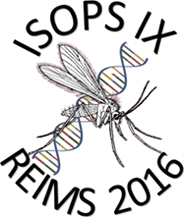- Record: found
- Abstract: found
- Article: found
Canine visceral leishmaniasis in the metropolitan area of São Paulo: Pintomyia fischeri as potential vector of Leishmania infantum Translated title: Leishmaniose viscérale canine dans la région métropolitaine de São Paulo : Pintomyia fischeri comme vecteur potentiel de Leishmania infantum

Abstract
American visceral leishmaniasis is a zoonosis caused by Leishmania infantum and transmitted mainly by Lutzomyia longipalpis. However, canine cases have been reported in the absence of this species in the Greater São Paulo region, where Pintomyia fischeri and Migonemyia migonei are the predominant species. This raises the suspicion that they could be acting as vectors. Therefore, this study sought to investigate specific vector capacity parameters of these species and to compare them with those of Lu. longipalpis s.l. Among these parameters the blood feeding rate, the survival, and the susceptibility to the development of Le. infantum were evaluated for the three species, and the attractiveness of dogs to Pi. fischeri and Mg. migonei was evaluated. The estimated interval between blood meals was shorter for Lu. longipalpis s.l, followed by Pi. fischeri and Mg. migonei. The infection rate with Le. infantum flagellates in Lu. longipalpis was 9.8%, in Pi. fischeri 4.8%, and in Mg. migonei nil. The respective infective life expectancies (days) of Lu. longipalpis, Mg. migonei, and Pi. fischeri were 2.4, 1.94, and 1.68. Both Pi. fischeri and Mg. migonei were captured in the kennel with a predominance (95%) of Pi. fischeri. Considering the great attractiveness of dogs to Pi. fischeri, its susceptibility to infection by Le. infantum, infective life expectancies, and predominance in Greater São Paulo, this study presents evidence of Pi. fischeri as a potential vector of this parasite in the region.
Translated abstract
La leishmaniose viscérale américaine est une zoonose causée par Leishmania infantum et transmise principalement par Lutzomyia longipalpis. Cependant, des cas canins ont été rapportés dans la région de São Paulo en l’absence de cette espèce, avec Pintomyia fischeri et Migonemyia migonei comme espèces prédominantes, ce qui suggère qu’elles pourraient agir comme vecteurs. Par conséquent, cette étude a cherché à étudier certains paramètres de capacité vectorielle de ces espèces et de les comparer avec ceux de Lu. Longipalpis s.l. Parmi ces paramètres, le taux d’alimentation sanguin, la survie et la susceptibilité au développement de Le. infantum ont été évalués pour les trois espèces, et l’attrait des chiens a été évalué pour Pi. fischeri et Mg. migonei. L’intervalle estimé entre les repas sanguins était plus court pour Lu. longipalpis s.l., suivi par Pi. fischeri et Mg. migonei. Le taux d’infection par des formes flagellées de Le. infantum était de 9.8 % chez Lu. longipalpis, 4.8 % chez Pi. fischeri, et néant chez Mg. migonei. Les espérances de vie infectieuses respectives de Lu. longipalpis, Mg. migonei et Pi. fischeri étaient 2.4, 1.94 et 1.68 jours. Les deux espèces Pi. fischeri et Mg. migonei ont été capturées dans les chenils avec une prédominance (95 %) pour Pi. fischeri. Considérant la grande attractivité des chiens pour Pi. fischeri, sa susceptibilité à l’infection par Le. infantum, son espérance de vie infectieuse et sa prédominance dans le Grand São Paulo, cette étude suggère que Pi. fischeri est vecteur potentiel de ce parasite dans cette région.
Related collections
Most cited references49
- Record: found
- Abstract: found
- Article: not found
Transmission of Leishmania metacyclic promastigotes by phlebotomine sand flies
- Record: found
- Abstract: found
- Article: not found
Phlebotomine vectors of the leishmaniases: a review.
- Record: found
- Abstract: found
- Article: not found
